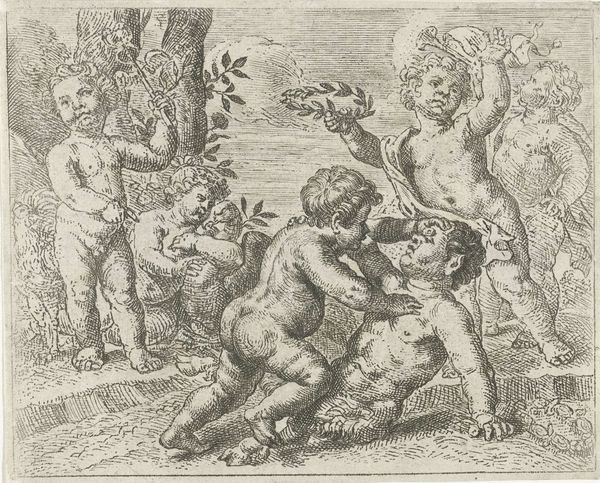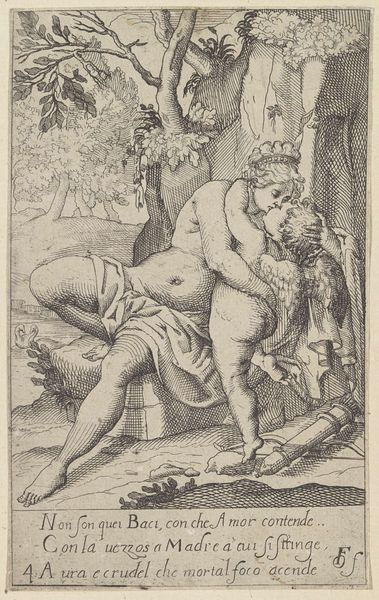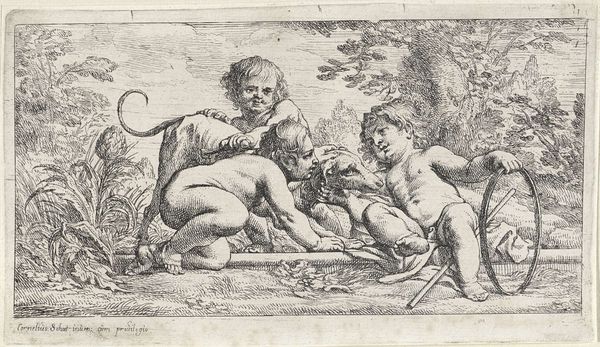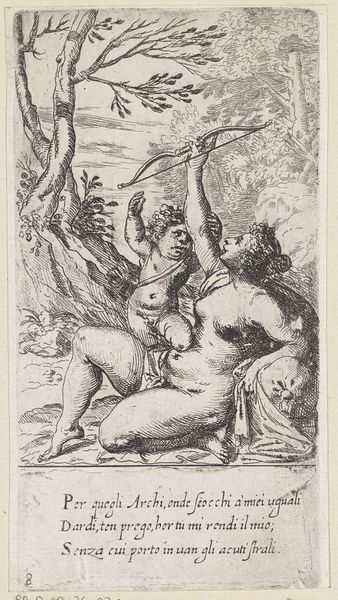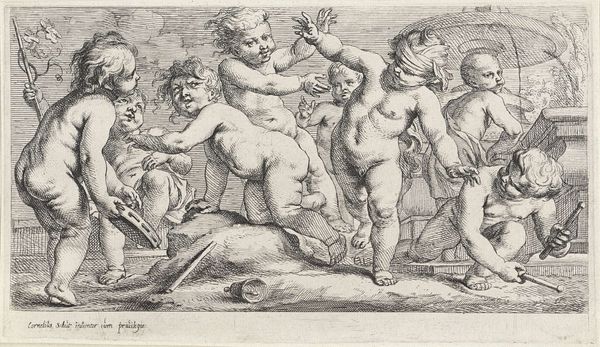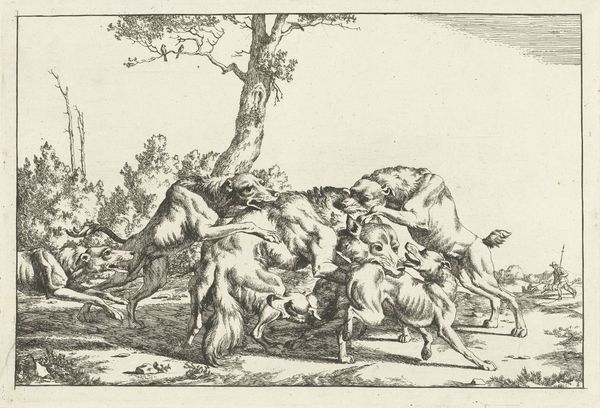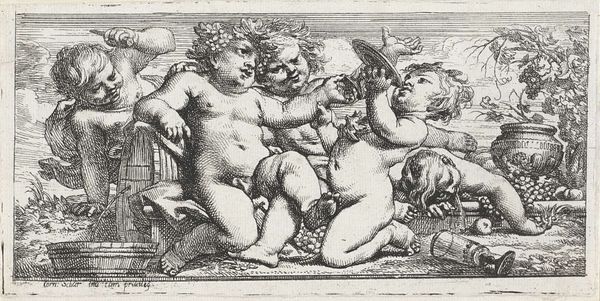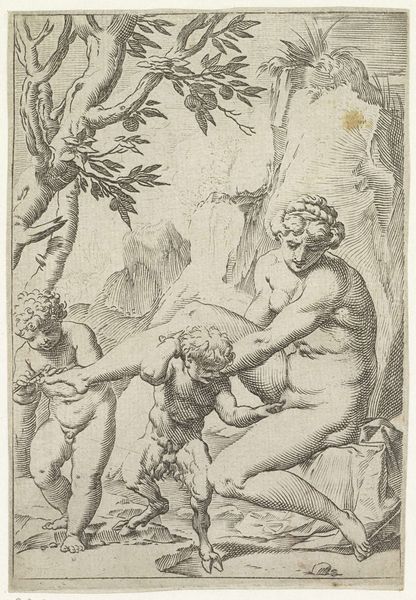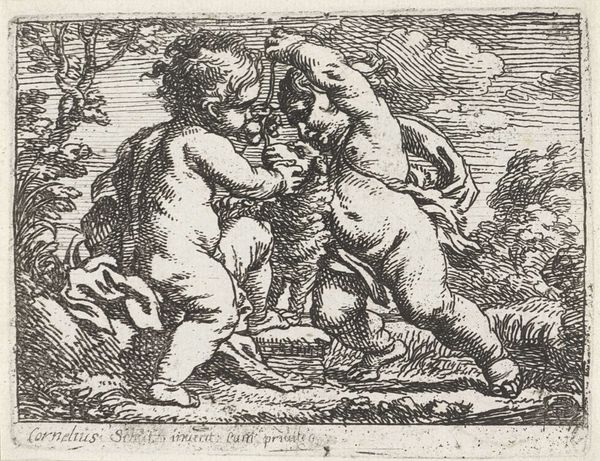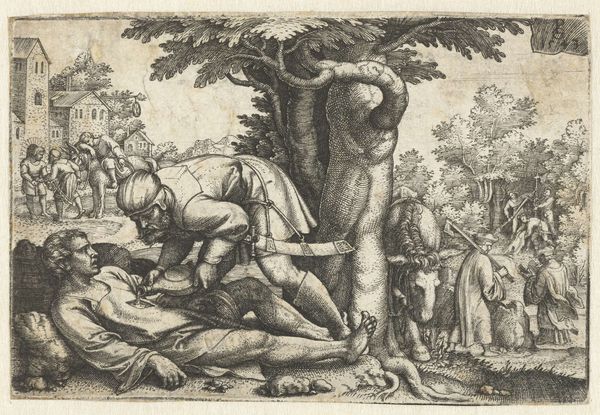
engraving
#
allegory
#
baroque
#
figuration
#
genre-painting
#
engraving
Dimensions: height 112 mm, width 340 mm
Copyright: Rijks Museum: Open Domain
Editor: Here we have "Fries with playing children and putti," an engraving made sometime between 1618 and 1655 by Cornelis Schut, housed here at the Rijksmuseum. It’s playful, busy, full of these chubby cherubs, or putti, caught in a moment of pure, chaotic joy! What draws your eye in this scene? Curator: The enduring fascination with putti stems, I think, from their dual nature. They are both sacred and profane. Look how Schut combines them with explicitly earthly play – scattering fruit, teasing each other. What emotional resonances do you find there? Editor: It feels a bit like a visual representation of abundance and fertility, but also hints at the transience of pleasure; they’re gleefully making a mess! Are there specific allegorical elements in the imagery? Curator: Yes, the garlands they carry are key. Garlands, especially of fruit, were common symbols for earthly abundance and divine favor, weren't they? The image then gains greater context as part of the larger allegory tradition of the Baroque period that suggested an artist was working within, right? Editor: Absolutely. That period's aesthetic aimed to overload senses with grandeur to inspire awe and emotional extremes, whereas this image delivers emotional appeal. Curator: Note too, the presence of Pan, his pipes silent and neglected as he stares. A potent reminder of shifting cultural priorities during the Counter-Reformation perhaps? The focus shifted away from rustic or pagan symbolism onto an exaltation of human intellect, expressed here via allegorical depictions of the same intellect, right? Editor: That's fascinating! So, seeing the putti not just as decorations, but active agents embodying broader cultural shifts, definitely adds a richer dimension. I never would have seen that on my own. Thanks! Curator: Precisely, and that’s how art acts as a time capsule, forever holding meanings across time.
Comments
No comments
Be the first to comment and join the conversation on the ultimate creative platform.

